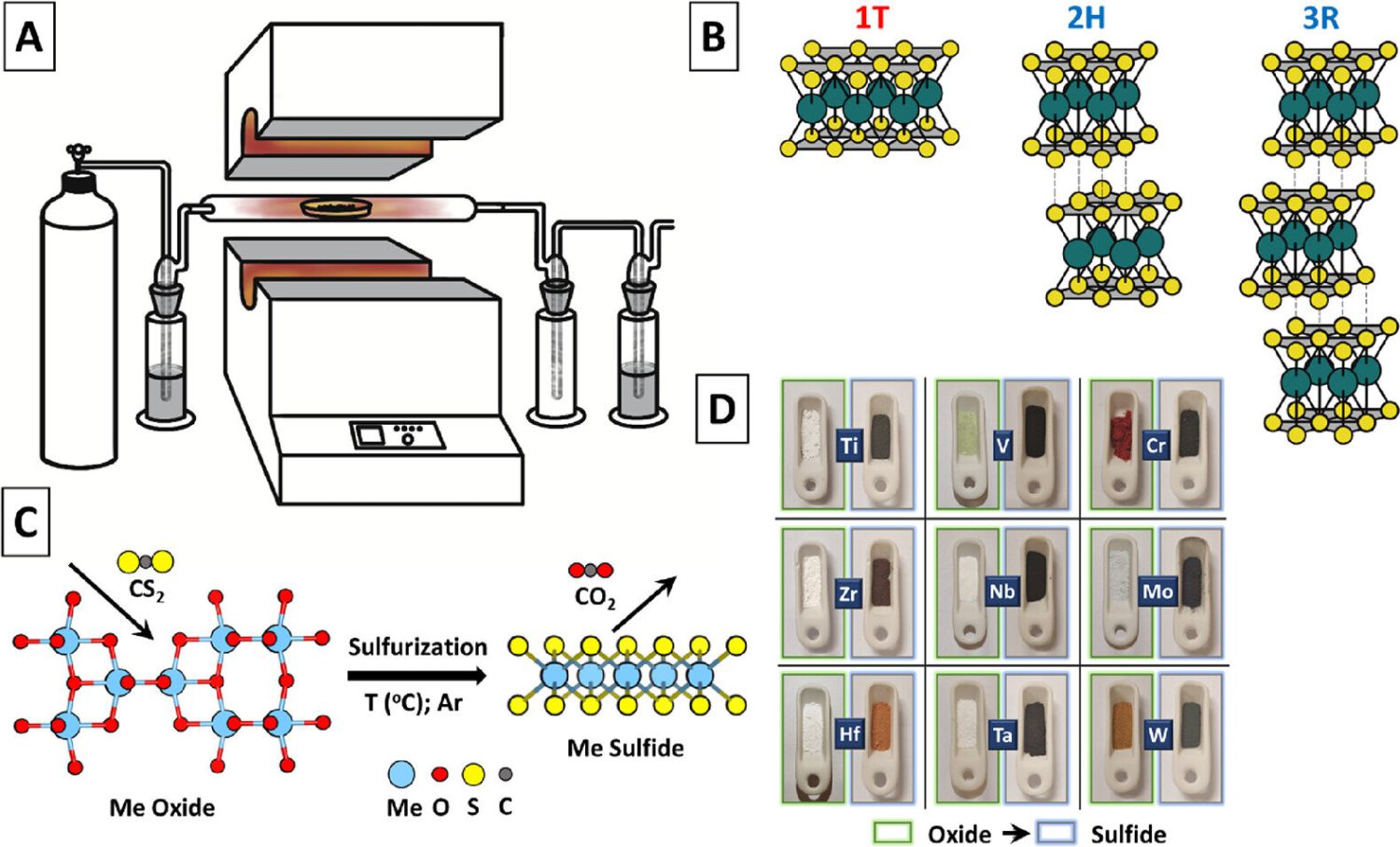Researchers at the University of Chemistry and Technology, Prague (UCT Prague) have pioneered a novel method for the rapid and scalable synthesis of 2D transition metal sulfides. Utilizing a sulfurization technique in CS₂ vapor, this breakthrough allows the transformation of metal oxides into high-quality sulfides in just three hours.
The process is applicable to nine different transition metals, including titanium, molybdenum, and tungsten, and can be scaled up for gram-scale production using basic laboratory equipment.
The findings are published in the journal Inorganic Chemistry.
 Figure: (A) Schematic representation of the experimental setup used for production of TM sulfides in CS2 flow under increased temperature; (B) schematic description of different TM sulfide crystalline structures, which can be produced using the proposed approach; (C) schematic and atomic structure of typical metal oxide sulfurization; (D) photos of the powders of metal oxide precursors and resulted sulfides. (High resolution image)
Figure: (A) Schematic representation of the experimental setup used for production of TM sulfides in CS2 flow under increased temperature; (B) schematic description of different TM sulfide crystalline structures, which can be produced using the proposed approach; (C) schematic and atomic structure of typical metal oxide sulfurization; (D) photos of the powders of metal oxide precursors and resulted sulfides. (High resolution image)
The innovative approach overcomes the limitations of traditional methods, which often require complex equipment and prolonged synthesis times. By using readily available precursors and optimizing temperature control, the researchers can fine-tune the crystalline structure and properties of the produced materials.
This advancement not only offers a reliable and efficient solution for the synthesis of 2D materials but also opens avenues for their application in electronics, energy storage, catalysis, and other technological fields.
Despite these achievements, the research team faced significant challenges, particularly in optimizing the sulfurization conditions for each metal. Transition metals vary greatly in their affinity for oxygen, making it difficult to achieve consistent results across the range of metals tested. The team also had to carefully manage temperature settings to avoid incomplete sulfurization or the formation of unwanted phases.
Dr. Oleksiy Lyutakov explained, "Controlling the sulfurization environment was crucial to ensure the purity and structural integrity of the materials (transition metal sulfides). Each metal presented unique challenges, but our method's flexibility allowed us to adapt the process accordingly."
Reference
Vladislav Buravets et al, Rapid and Universal Synthesis of 2D Transition Metal (Ti, Zr, Hf, V, Nb, Ta, Cr, Mo, and W) Sulfides through Oxide Sulfurization in CS2 Vapor, Inorganic Chemistry (2024). DOI: 10.1021/acs.inorgchem.4c00475

